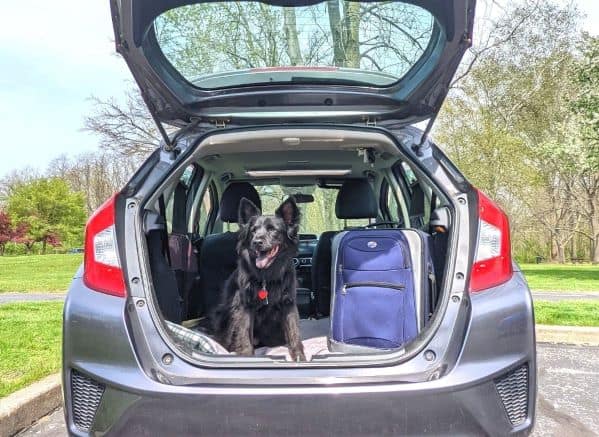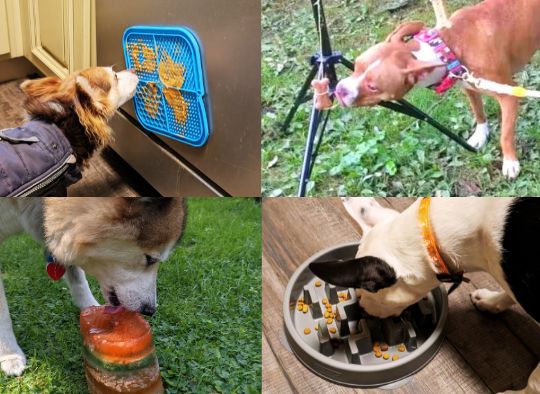Fireworks Fears? A Guide to Anxiety Management
As an Amazon Associate, I earn from qualifying purchases. We may receive a commission for purchases made through these links. This site also contains affiliate links to products besides Amazon and we may also receive a commission for purchases made through those links too (at no additional cost to you).
How to Help Your Stressed-Out Dog
Every dog has anxiety, but each dog will deal with its fear in different and unfortunately, sometimes harmful ways. Learn how to answer the question; “How to help my dog with anxiety?” especially if it is causing them to suffer. This guide will talk about several methods that can help like distraction, desensitization, and even medication. Each of these methods can be utilized separately or together. There are even different medications that ‘treat’ anxiety in different ways, each with different potential side effects. Remember, it is up to you to figure out the best way to help your pets, so let’s get started.

What is Anxiety in Dogs?
Anxiety is simply a feeling of fear and/or uneasiness and is something quite common in humans and dogs alike. Believe it or not, dogs can suffer from anxiety disorders just like humans. Since dogs cannot tell us what they are feeling, it is up to us to pick up on their behavioral cues so we know when they might need a little help. Anxiety is a normal feeling for all dogs, but it can occasionally lead to destructive behaviors and unhealthy levels of stress which may cause health issues.
Signs of Anxiety
Some signs that a dog is starting to feel anxious is if you notice that their ears are back, their tail is tucked, or they are panting. Other signs are hiding, trembling, pacing, whining, or having ‘potty’ accidents. There are several behavioral cues that you may not automatically attribute to anxiety but can in fact be a sign of immense stress such as barking/howling, digging, heavy licking/chewing, and other destructive behavior.
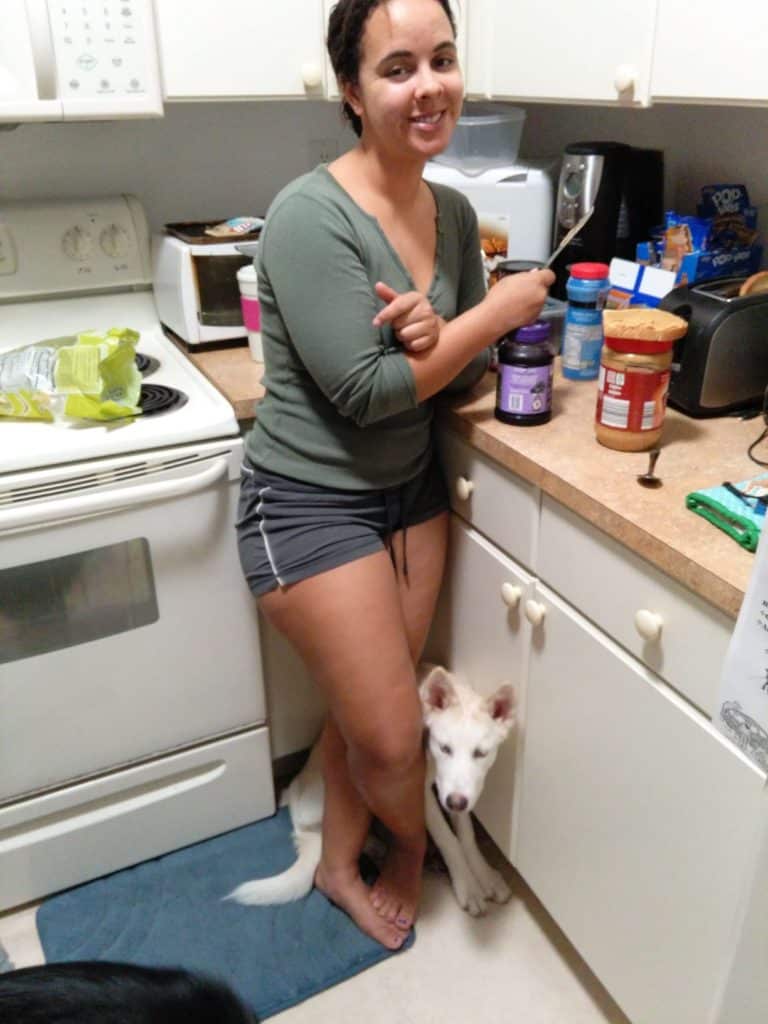
Causes of Anxiety
Every dog is naturally afraid of certain situations, objects, or experiences. This feeling of fear and anxiety helps to keep them safe from dangerous circumstances. Socializing our pets and introducing them to a variety of things does help with anxiety issues when done appropriately. Common fears can be things like fireworks, thunderstorms, or strangers. Be aware that dogs can also be anxious about smaller details like people wearing hats or sunglasses, bikes, palm trees, or even small children (they walk like zombies).

Anything that may move or make sounds unexpectedly can be a stressor for them. It is important to take the time to understand what is causing your dog’s anxiety and decide whether their stress level is at a safe and appropriate level. If you are concerned that your dog is suffering from their anxiety, it is time to take steps to help them out.

Treatments
Depending on the level of anxiety that your dog is experiencing and what is causing them stress, there are a variety of different treatments or methods that you can use to help them out. Don’t be afraid to ask for help if you have any questions or consult a professional. The most important thing during this process is to not add to your dog’s stress. This means avoiding getting angry or yelling at them while they are showing any potential signs of anxiety. You also do not want to ‘baby’ them too much. If you act like there is something wrong, this makes them think they are right to be anxious. Try to pet or hold them if it helps them without acting like there is something scary happening.
Distraction
If your dog is showing signs of anxiety, try distracting them from whatever is stressing them out. If they are stressed because of a sound, try playing music or turning on the TV. If they are anxious because of something they are seeing, try blocking their vision of it with a curtain or even your hand.

Pairing with Positive
Training can help with any number of behavioral issues including anxiety. For less serious cases, you can begin pairing the stressful event with something positive. In other words, whatever your dog really likes (treats, games, cuddles) give that to them while the event is happening. By doing this, your dog will hopefully start thinking of the good things instead of being scared when the bad things are happening. If your dog begins to exhibit dangerous behaviors due to stress, it is best to find a professional animal trainer who specializes in anxiety orders to work with you and your dog.

ThunderShirt
A ThunderShirt is a ‘shirt’ that wraps around your dog and applies constant gentle pressure to their body to help calm them down. Studies have shown that they can be over 80% effective. Many other brands have come up with their own slightly different version of a dog anxiety jacket as well. Every dog responds differently to wearing the shirt.
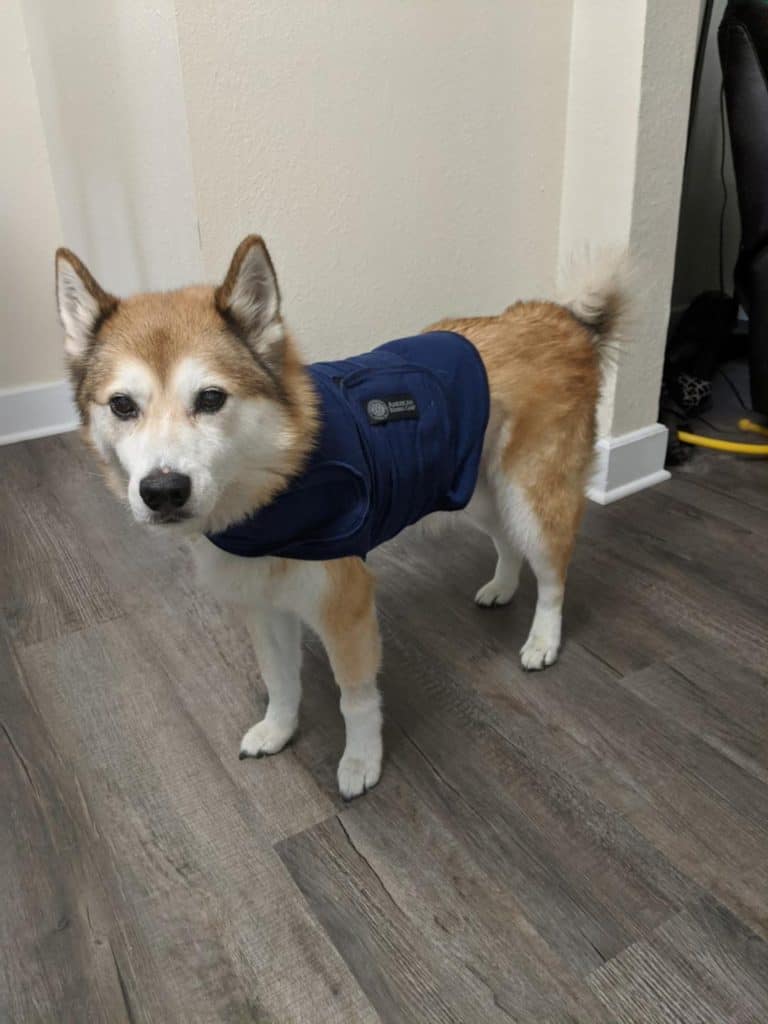
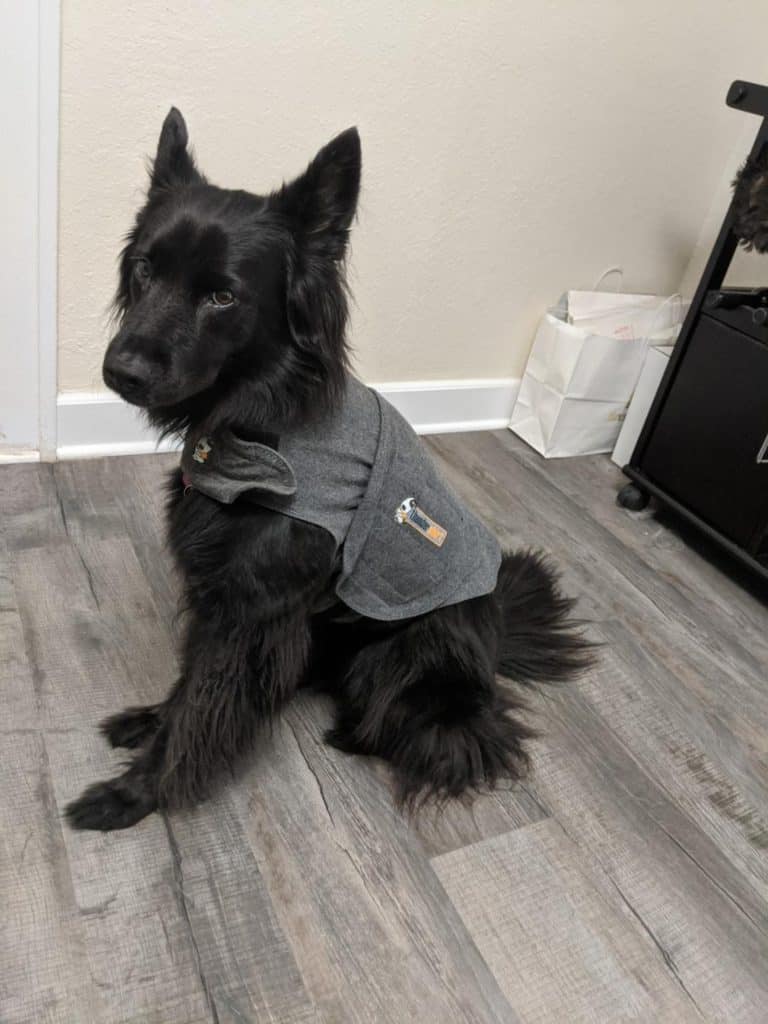
*We have used shirts by both companies and have found them comparable. They have helped reduce anxiety in 2 of our dogs in mild to moderately stressful situations*
Adaptil
Adaptil is a company that has created a line of products that sends ‘comforting messages’ by mimicking a mother’s nursing pheromone to dogs. You can choose between a collar, diffuser, or a spray depending on the situation that is stressful for your dog. There is even a separate line for puppies. The company states that its products are not only vet-approved but also proven to help with barking, separation anxiety, and destruction of furniture.
*We were pleasantly surprised to see a noticeable difference in stress levels for all four dogs when we used the diffuser in mild to moderately stressful situations. The travel spray also noticeably helped with travel anxiety*
CBD
CBD has been shown to be helpful with many different medical and behavioral issues in dogs and humans alike including anxiety. Make sure to do your full research into the company you are looking to purchase from as the CBD for dogs has little regulation. This means that some brands can do more harm than good for your pup.
We started using Clean Remedies CBD oil for pets and have been able to notice a positive difference with this product as well. We primarily use it to help our oldest pup with joint pain and love that it helps our dogs in multiple ways. This company has an extensive line for humans but you can easily find the pet product section on the menu bar.

Provide A Safe Place
This may be a small enclosed space like a crate or you can make a DIY Canopy Bed. This should be a place where they can be left alone and are never forced to be in. Many animals feel more comfortable in a den-type area.

Medication
There are numerous medications on the market to address stress and anxiety in dogs. Some only address the dog’s behavior instead of the dog’s actual fear and anxiety. These drugs will help prevent your dog from being destructive and loud, but they will still potentially feel highly anxious. Some of the newer medications have been proven to lower the actual stress levels (cortisone) not just the frequency of negative behaviors associated with the stress. It is worth the time to discuss with your veterinarian how each medication works, the side effects, and the cost so you can decide what would be best for your dog. Here are several medications that we have tried for our dog, Kiara.

Valium or Diazepam is a popular anti-anxiety medicine that more commonly comes in pill form. This medication can take 1-2 hours to kick in, so it is best if you are aware of the stressful event in advance.
Sileo is a drug that comes in a tube (it was like a gel or cream) and is inserted and rubbed into the dog’s mouth between their gum and cheeks. This medication is made specifically for noise aversion issues and quickly absorbs into the gums, so it does not take long to kick in. This medication can be expensive depending on how often you would need to use it.
Trazodone is another common drug that is prescribed, and it comes in pill form. One of the downsides is that it does take a bit of time for it to kick in (for our dog it was 30 min -1 hr). This could be difficult if a stressful event (like a thunderstorm) comes in quickly and does not last very long.
Conclusion
There are several methods that you can use to help your dog with anxiety. The best method to control your dog’s stress levels is dependent on what is causing your dog’s stress and how stressed out your dog gets. These methods can be used together to give your dog more ways to cope with their stress and anxiety in more helpful and healthy ways. If your dog needs medication to manage its anxiety, it is best to formulate a plan ahead of time since the medicine can take a while to kick in. Utilize whatever tools including your vet and professional behavioral trainers to help your dog live a healthier, happier, and safer life.
Pin For Later:
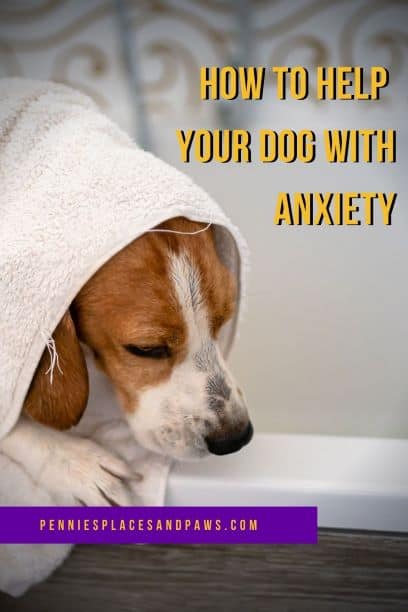
Amazon and the Amazon logo are trademarks of Amazon.com, Inc, or its affiliates.



